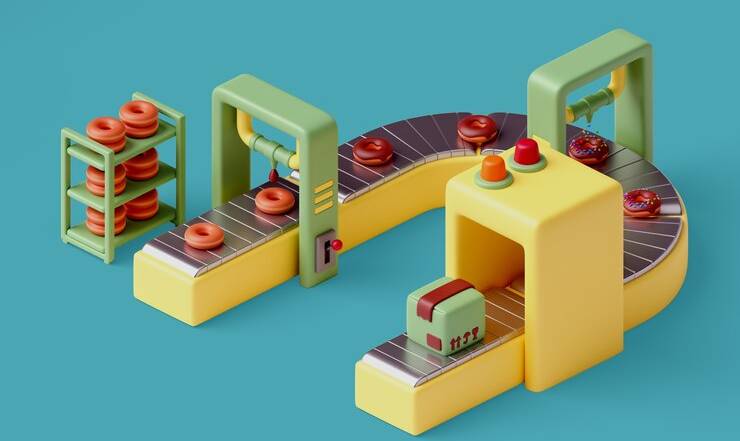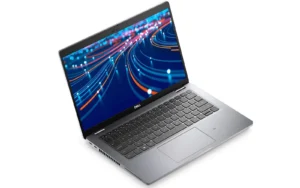In an increasingly digital world, retail has undergone a significant transformation. With the rise of e-commerce and the rapid evolution of consumer expectations, retailers are constantly seeking innovative ways to engage customers and enhance their shopping experiences. One of the most promising developments in this area is 3D product animation. This technology allows retailers to create lifelike, interactive representations of their products, offering customers a more immersive and detailed view than traditional photos or videos can provide. As 3D product animation continues to evolve, its impact on the retail industry is expected to grow exponentially.
The Rise of 3D Product Animation in Retail
The adoption of 3D product animation in retail is not just a passing trend; it represents a fundamental shift in how products are marketed and sold. Traditionally, retailers have relied on static images and videos to showcase their products online. While these methods have been effective to some extent, they often fall short in providing customers with a comprehensive understanding of a product’s features, design, and functionality.
3D product animation services have emerged as a game-changer in this context. By creating animated models that customers can interact with, retailers can offer a more dynamic and engaging shopping experience. For example, a customer shopping for a piece of furniture can use a 3D animated model to view the product from all angles, zoom in on specific details, and even see how it would look in different settings. This level of interactivity not only enhances the customer experience but also increases the likelihood of a purchase.
Moreover, as more retailers recognize the value of 3D product animation, specialized animation studios in Florida and other regions are seeing increased demand for their services. These studios are equipped with the expertise and technology needed to create high-quality 3D animations that meet the unique needs of retail businesses.
The Benefits of 3D Product Animation for Retailers
- Enhanced Product Visualization: One of the most significant benefits of 3D product animation is the ability to provide customers with a more realistic and detailed view of products. Unlike static images or videos, 3D animations can showcase a product from every angle, highlighting its features and design elements in a way that traditional media cannot. This enhanced visualization can be particularly beneficial for complex or high-end products, where customers need to see every detail before making a purchase.
- Improved Customer Engagement: In the competitive world of retail, customer engagement is key to driving sales. 3D product animation offers a more interactive and engaging shopping experience, allowing customers to explore products in a way that feels more personal and immersive. This increased level of engagement can lead to higher conversion rates, as customers are more likely to feel confident in their purchase decisions.
- Customization and Personalization: Another advantage of 3D product animation is the ability to offer customers a more personalized shopping experience. Retailers can use 3D animations to show different product variations, such as colors, sizes, and configurations, allowing customers to see exactly what they are buying. This level of customization can help retailers stand out in a crowded market and cater to the specific needs and preferences of their customers.
- Cost-Effective Marketing: While creating high-quality 3D animations may require an initial investment, it can be a cost-effective marketing strategy in the long run. Once a 3D model is created, it can be used across multiple channels, including websites, social media, and online ads. This versatility makes 3D product animation a valuable asset for retailers looking to maximize their marketing efforts.
- Reduced Return Rates: One of the challenges in e-commerce is the high rate of product returns, often due to customers receiving items that do not match their expectations. 3D product animation can help reduce return rates by providing customers with a more accurate representation of the product before they make a purchase. When customers have a clear understanding of what they are buying, they are less likely to be disappointed with their purchase.
Technological Advancements Driving the Future of 3D Product Animation
As technology continues to advance, the future of 3D product animation in retail looks increasingly promising. Several key developments are expected to shape the industry in the coming years:
- Real-Time Rendering: One of the most exciting advancements in 3D animation technology is real-time rendering. This technology allows for the creation of highly detailed and realistic animations that can be rendered in real-time, providing a more seamless and interactive experience for customers. Real-time rendering is particularly beneficial for retailers who want to offer live product demonstrations or allow customers to interact with products in a virtual environment.
- Augmented Reality (AR) and Virtual Reality (VR): AR and VR are set to revolutionize the retail industry, and 3D product animation will play a crucial role in this transformation. AR allows customers to view 3D models of products in their real-world environment, such as seeing how a piece of furniture would look in their living room. VR, on the other hand, offers a fully immersive shopping experience, where customers can explore a virtual store and interact with products as if they were physically present. As AR and VR technology becomes more accessible, retailers are likely to incorporate these features into their online shopping platforms, further enhancing the customer experience.
- AI-Driven Automation: Artificial intelligence (AI) is another technology that is expected to have a significant impact on 3D product animation. AI-driven automation can streamline the animation process, making it faster and more efficient to create high-quality 3D models. This technology can also be used to create personalized animations based on customer preferences and behavior, further enhancing the shopping experience.
- Cloud-Based Solutions: Cloud-based platforms are making it easier for retailers to access and manage 3D product animations. These solutions allow retailers to store and share 3D models across multiple devices and platforms, making it more convenient to integrate animations into their marketing and sales strategies. Cloud-based solutions also enable collaboration between retailers and animation studios in Florida and other regions, facilitating the creation of high-quality animations that meet the specific needs of the retail industry.
- Interactive 3D Configurators: Interactive 3D configurators are becoming increasingly popular in the retail industry. These tools allow customers to customize products in real-time, selecting different options such as colors, materials, and features. The 3D configurator then generates a dynamic 3D model that reflects the customer’s choices. This level of interactivity not only enhances the customer experience but also allows retailers to offer a wider range of product options without the need to physically stock every variation.
The Role of Animation Studios in Florida in Shaping the Future of Retail
As the demand for 3D product animation continues to grow, animation studios in Florida and other regions are playing a crucial role in shaping the future of retail. These studios are at the forefront of innovation, using cutting-edge technology and creative expertise to create animations that meet the evolving needs of retailers.
Florida, in particular, has become a hub for animation studios that specialize in 3D product animation services. The state’s thriving tech industry, combined with its access to top talent and resources, has made it an ideal location for studios that are pushing the boundaries of what is possible in 3D animation.
These studios are not only creating high-quality animations but are also helping retailers to integrate 3D product animation into their overall marketing and sales strategies. By working closely with retailers, animation studios in Florida can create customized animations that align with the brand’s identity and resonate with its target audience. This collaborative approach ensures that the animations are not only visually stunning but also effective in driving sales and enhancing the customer experience.
The Impact of 3D Product Animation on E-Commerce
E-commerce has been one of the biggest beneficiaries of 3D product animation. As online shopping continues to grow in popularity, retailers are constantly looking for ways to differentiate themselves and provide customers with a more engaging and immersive shopping experience. 3D product animation has emerged as a powerful tool in achieving this goal.
One of the key advantages of 3D product animation in e-commerce is its ability to bridge the gap between online and in-store shopping experiences. Traditionally, one of the main drawbacks of online shopping has been the inability to physically interact with products before making a purchase. However, 3D product animation allows customers to explore products in a virtual environment, providing a level of interactivity that closely mimics the in-store experience.
For example, an online clothing retailer can use 3D product animation to create virtual try-on experiences, where customers can see how different outfits would look on them before making a purchase. Similarly, a home decor retailer can use 3D animations to show how different furniture pieces would look in a customer’s home. These interactive experiences not only enhance the customer journey but also increase the likelihood of a purchase by providing customers with a more accurate and detailed view of the products.
Furthermore, 3D product animation can also help e-commerce retailers to reduce the rate of returns. As mentioned earlier, one of the main reasons for product returns in e-commerce is that customers receive items that do not match their expectations. By providing customers with a more realistic and detailed view of the products through 3D animations, retailers can help customers make more informed purchasing decisions, reducing the likelihood of returns and increasing customer satisfaction.
Conclusion
The future of 3D product animation in retail is bright, with the technology poised to become an integral part of the shopping experience. As retailers continue to embrace 3D product animation services, the impact on customer engagement, product visualization, and sales is expected to grow significantly. Animation studios in Florida and other regions are at the forefront of this transformation, leveraging their expertise and technology to create animations that meet the evolving needs of the retail industry.
As technological advancements continue to drive the evolution of 3D product animation, the possibilities for retailers are virtually limitless. From real-time rendering and AR/VR experiences to AI-driven automation and interactive 3D configurators, the future of 3D product animation is full of exciting opportunities. For retailers looking to stay ahead of the competition and provide customers with a more engaging and immersive shopping experience, investing in 3D product animation is no longer just an option—it’s a necessity.



